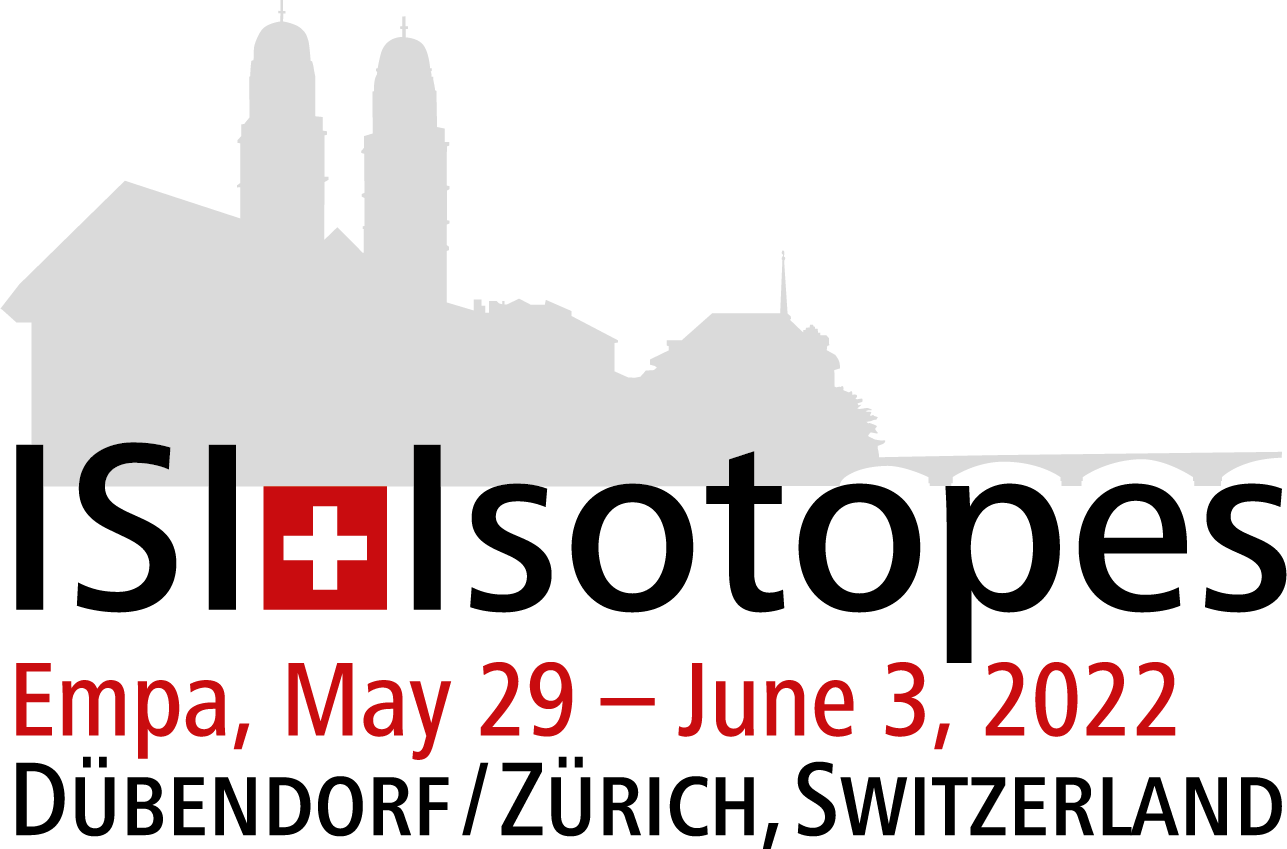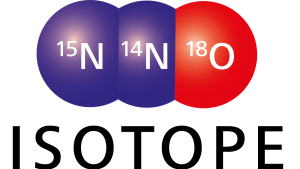Emissions and Isotopes
The Group for Emissions and Isotopes provides analytical tools and technical know-how for the characterization and quantification of air pollution. We serve the industry, policy makers and the public with a thorough understanding of anthropogenic and natural emissions. Our main activities focus on the analysis of trace gases and their isotopes to quantify emissions, identify precursors and trace transformation pathways. An overview of ongoing project activities can be found below.
Stable isotopes (H, C, N, O)
We research the naturally occurring variations of hydrogen, carbon, nitrogen and oxygen isotopes in changing environmental settings. Many of our projects center around potent non-CO2 greenhouse gases: nitrous oxide (N2O) and methane (CH4), their emissions from different processes and driving parameters. The relative abundance of nitrogen and oxygen isotopes in a N2O molecule or carbon and hydrogen isotopes in a CH4 molecule is different depending on its origin (see Figure).
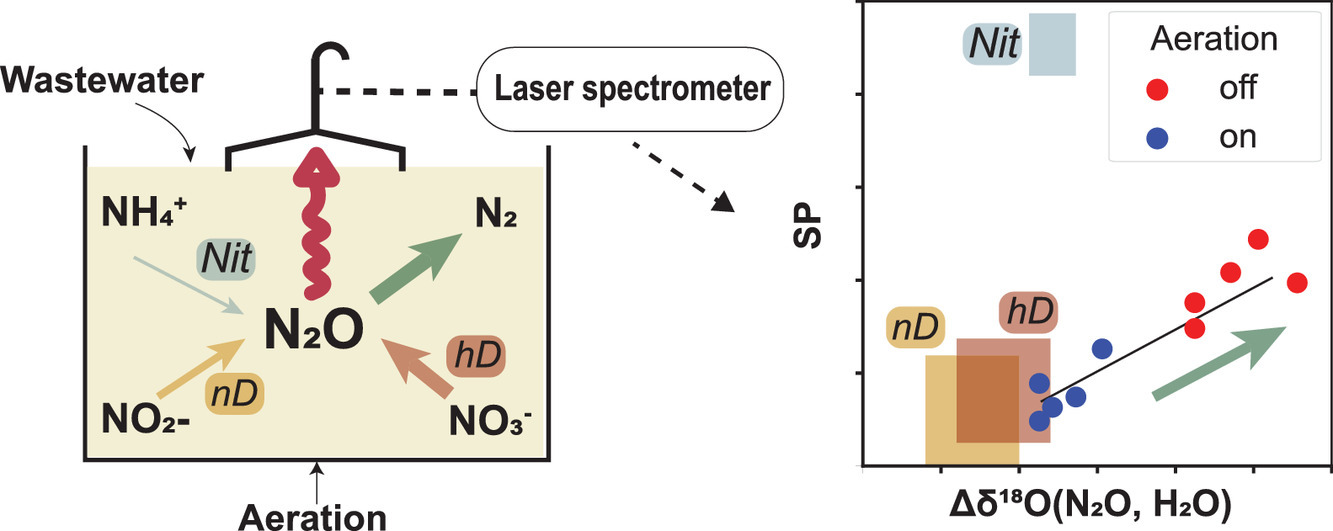
Clumped isotopes
In recent years, we extended our isotope “toolbox” for the study of very rare doubly substituted isotopic species of N2O and CH4, which we expect to improve our understanding for a wide range of processes - from the microbial scale to the tectonics history.
Radiocarbon
Radiocarbon analysis in carbon dioxide (CO2) is the most direct tool to distinguish between renewable sources and fossil fuel combustion, and to support mitigation efforts towards carbon neutrality. We are establishing the first analytical tool for continuous radiocarbon analysis in atmospheric CO2. The instrumental setup will comprise a SCAR radiocarbon spectrometer and a home-built QCLAS spectrometer for 13CO2/12CO2, both coupled to an automated preconcentration device to separate and purify CO2 from air.
Analytics: Preconcentration - Laser spectroscopy
Central to most of our work is laser spectroscopy. We run customized and off-the-shelf spectrometers tuned for various singly or doubly isotopically substituted greenhouse gases. If very rare isotopic species or high precision measurements are targeted we interface our spectrometers with custom-built, automated preconcentration devices.
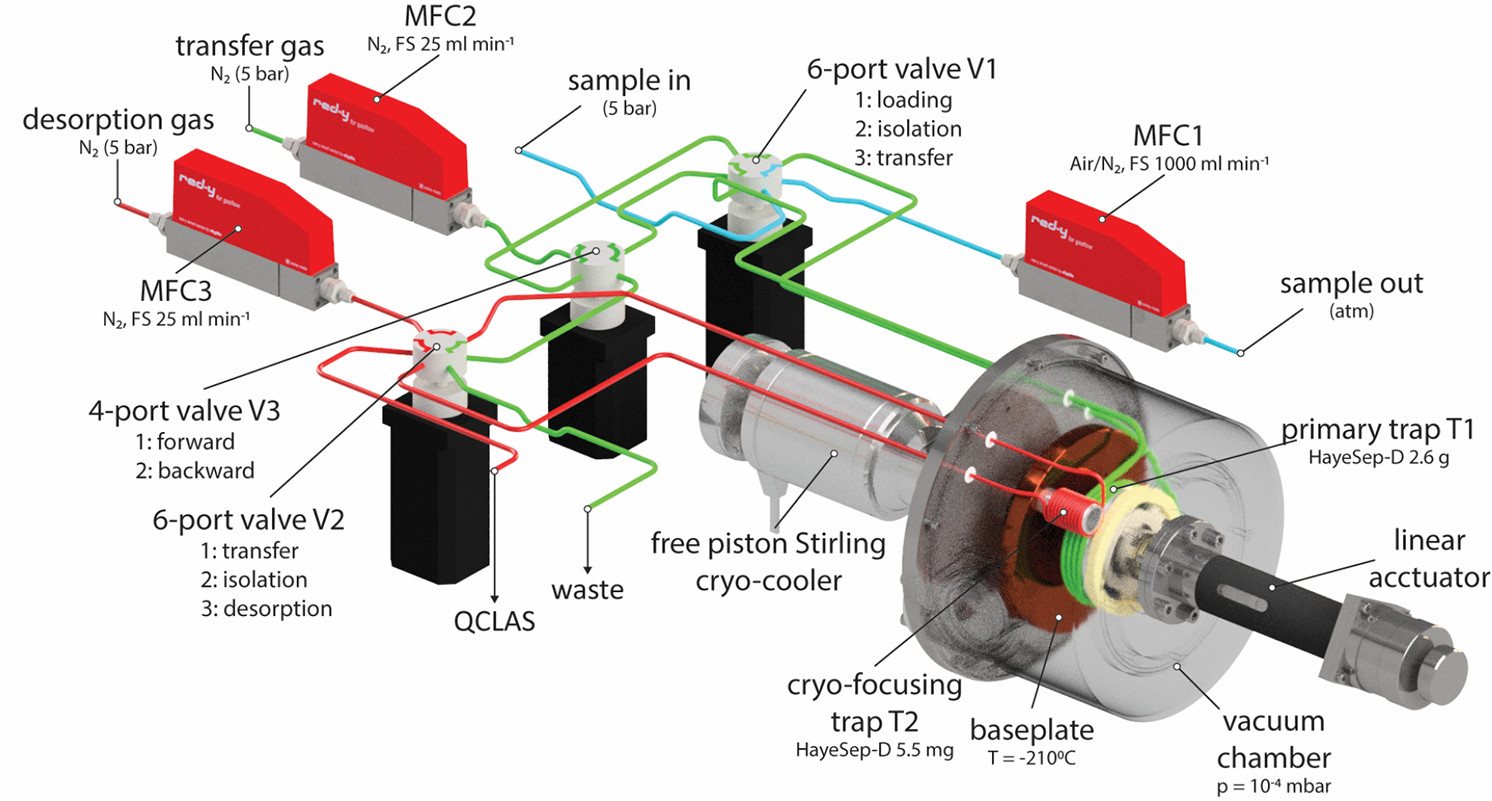
Diffuse emissions / tracers
Many emission sources we are studying are not point sources or ducted but fugitive. Important examples are agricultural emissions from soils and animal housings. In collaboration with our research partner Agroscope, we implemented a tracer ratio method in a naturally ventilated experimental dairy housing in Tänikon. Analyzing the diluted tracer gases together with the target gases of our study, e.g. ammonia, methane, VOCs, we can estimate their mass emissions.
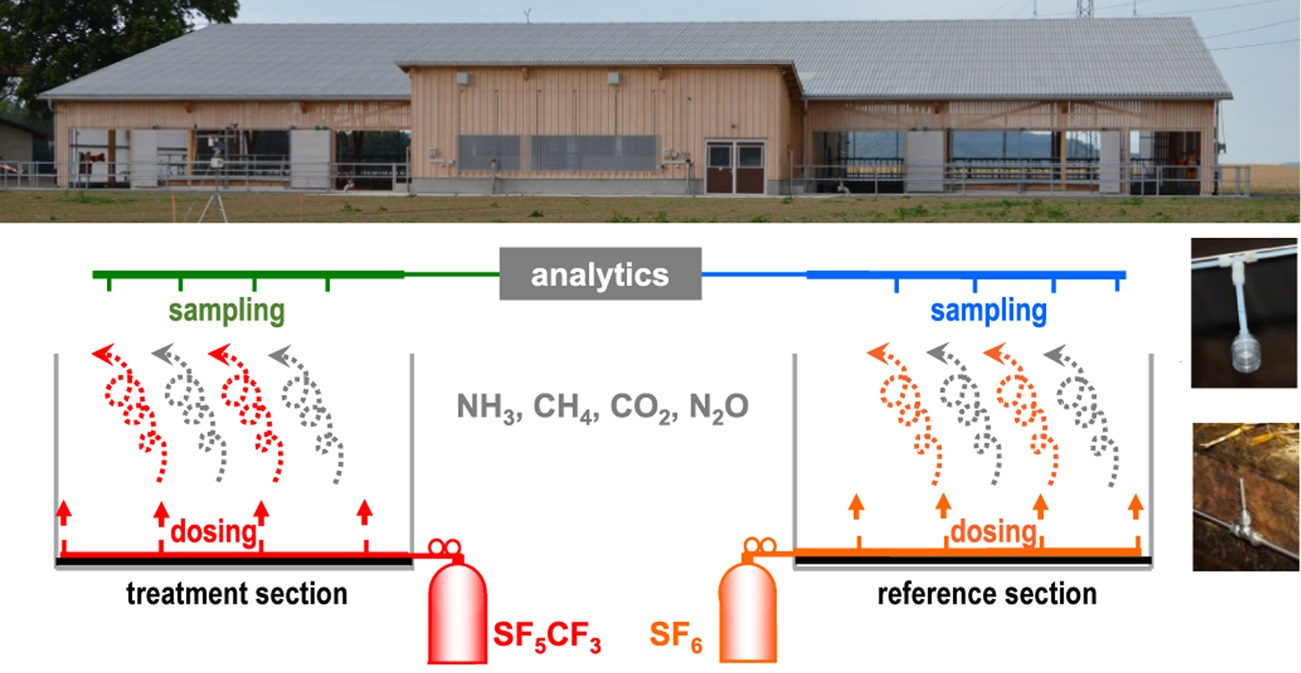
Ongoing projects
- IM4CA: Investigating Methane for Climate Action 2025-2028
- MetHIR: Metrology for harmonisation of field isotope ratio measurements 2025-2028
- MetCTG: Metrology for comparable and trustworthy greenhouse gas remote sensing datasets 2025-2028
- CITRA: Clumped isotopes: a transformative tool for understanding aquatic nitrous oxide cycling 2025-2026
- isoMET: Metrology for European emissions verification on methane isotopes 2022 - 2025
- PARIS: Process attribution of regional emissions 2023 - 2027
- quantiAGREMI: On farm quantification of ammonia and greenhouse gas emissions from livestock production 2022 - 2025
- graziQ-house: Quantification and modelling of housing-based emissions 2023 - 2027
- SCENE: Swiss Center of Excellence on Net-Zero Emissions 2023 - 2026
- 7up: Exploiting the potential of simultaneous analysis of seven singly and doubly substituted N2O isotopocules to disentangle production pathways 2022 - 2026
- CLUMPME: Clumped isotopes of methane and dolomite to assess the thermal history of orogens and the origin of thermogenic methane 2021 - 2025
Recently ended projects
- STELLAR: Stable isotope metrology to enable climate action and regulation 2020 - 2023
- AERCOW: Experimental dairy housing for quantifying methane and ammonia emission abatement strategies under entire herd conditions 2018 - 2022
- ISOMOL: Advanced understanding of autotrophic nitrogen removal and associated N2O emissions in mixed nitritation-anammox systems through combined stable ISOtopic and MOLecular constraints 2017 - 2022

Dr. Joachim Mohn
Group Leader Emissions & Isotopes
503 - Air Pollution / Environmental Technology
-
Share

